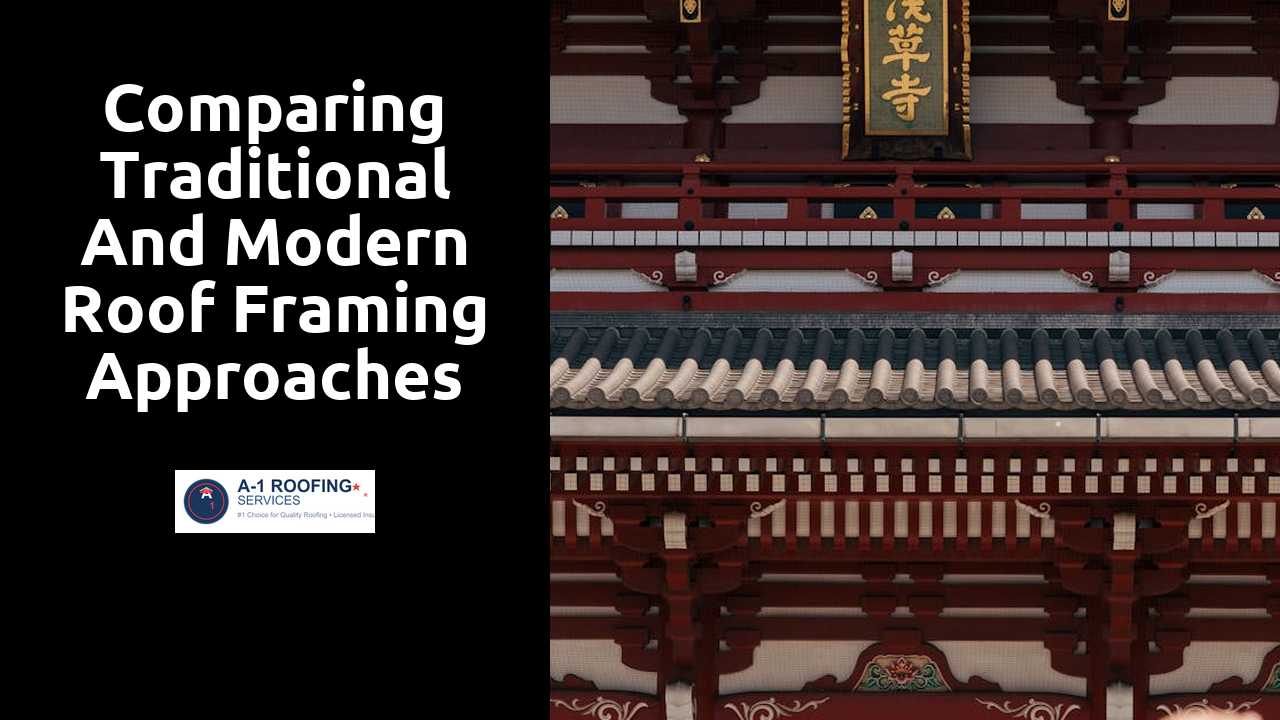
Comparing Traditional and Modern Roof Framing Approaches
Table Of Contents
Structural Integrity in Traditional Roof Framing
Traditional roof framing relies heavily on time-tested methods that have demonstrated reliability over generations. This approach often utilizes materials such as timber, which provides strength and durability. The use of wooden beams and trusses distributes weight evenly across the structure, ensuring stability and resilience against environmental forces. Additionally, traditional techniques often incorporate intricate joinery, enhancing the overall structural integrity while allowing for natural flexibility that can absorb changes in temperature and humidity.
The craftsmanship involved in traditional framing techniques contributes significantly to their longevity. Skilled artisans pay attention to the quality of materials and the precision of their work, resulting in roofs that can withstand the test of time. Furthermore, traditional methods often consider the natural characteristics of wood, including grain and moisture levels, allowing for a stronger bond and enhanced structural performance. This synergy between material and technique ensures that traditional roofs remain not only functional but also a testament to the artistry of construction.
Have a peek at this blog for further readings.
Load-Bearing Capabilities
Traditional roof framing relies heavily on timber beams and rafters, which have been the backbone of structures for centuries. These materials can effectively carry substantial loads and distribute weight across walls and support columns. The design often involves trusses and other configurations that maximize strength, allowing buildings to withstand both static and dynamic forces. However, the limitations of wood, including susceptibility to rot and warping, can affect long-term load-bearing performance if not properly maintained.
Modern roof framing, in contrast, employs engineered materials such as steel and engineered wood products, which offer increased load-bearing capabilities. These materials are designed to resist bending, twisting, and other forms of deformation, providing added durability. Additionally, advancements in computer-aided design and structural engineering enable architects and builders to optimize load distribution efficiently. This allows for larger spans and more complex designs, increasing the overall versatility of modern roofing systems while maintaining safety and structural integrity.
Structural Integrity in Modern Roof Framing
Modern roof framing techniques prioritize innovative engineering practices that enhance overall structural integrity. Advances such as truss systems and engineered wood products distribute loads more efficiently across the framework. These materials often provide higher strength-to-weight ratios compared to traditional lumber, enabling builders to span greater distances without requiring excessive support. This efficiency reduces the overall weight of the structure while maintaining stability, making it well-suited for contemporary architectural designs.
In addition to material advancements, modern practices incorporate technology that improves design precision and structural analysis. Software tools allow engineers to simulate various stress scenarios, ensuring that roofs can withstand environmental pressures such as high winds or heavy snowfall. Enhanced understanding of load dynamics leads to safer and more resilient structures. Increased reliance on prefabrication further streamlines the construction process and minimizes on-site errors, contributing to the overall robustness of modern roofing systems.
Advanced Engineering Practices
Advancements in engineering have revolutionized modern roof framing practices. Utilizing computer-aided design (CAD) software allows architects and builders to create precise models, enabling better visualization of complex geometric structures. Finite element analysis (FEA) is often employed to assess the structural performance of materials under various conditions, enhancing the safety and efficiency of roof designs.
Innovative materials, such as engineered wood products and lightweight steel, contribute to improved load-bearing capabilities while reducing overall weight. These materials possess superior strength and durability, providing solutions for unique design challenges. Additionally, prefabrication techniques have gained popularity, allowing sections of roofs to be constructed off-site and assembled quickly on location, which ensures consistent quality and speed in the building process.
Design Flexibility
Traditional roof framing often adheres to established design paradigms, relying on time-tested methods and materials. While this stability contributes to the overall reliability of structures, it can impose limitations when adapting to unique architectural visions. The predictability inherent in these designs can be a double-edged sword, as they may not accommodate modern preferences for creativity and variation. Homeowners and architects alike may find themselves constrained by the rigid nature of conventional techniques.
In contrast, modern roof framing utilizes advanced materials and innovative design software, significantly enhancing flexibility in architectural expression. Techniques such as modular construction enable the incorporation of various shapes, sizes, and aesthetics tailored to individual projects. This innovation allows for the creation of dynamic structures that can do more than just serve a functional purpose; they can also make bold stylistic statements. The ability to mix materials and apply contemporary engineering methods further enriches the potential for unique designs, meeting the diverse demands of today's architectural landscape.
Aesthetic Considerations
The visual appeal of a roof significantly contributes to the overall aesthetic of a building. Traditional roof framing often showcases intricate designs that reflect the architectural styles of various historical periods. Exposed timber beams and decorative trusses can enhance the charm of a home, evoking a sense of warmth and character. These details not only serve a functional purpose but also weave a narrative that speaks to craftsmanship and heritage.
In contrast, modern roof framing emphasizes minimalism and clean lines. This approach tends to prioritize functionality while allowing for innovative materials that can create striking silhouettes. Large overhangs and flat roofs contribute to a sleek, contemporary look. While some may see this as a lack of ornamentation, others appreciate the elegance that arises from simplicity and a focus on efficient design. Each style presents unique opportunities for aesthetic expression, appealing to different tastes and preferences.
Related Links
How to Ensure Proper Load Distribution in Roof FramingInnovative Roof Framing Methods for Energy Efficiency